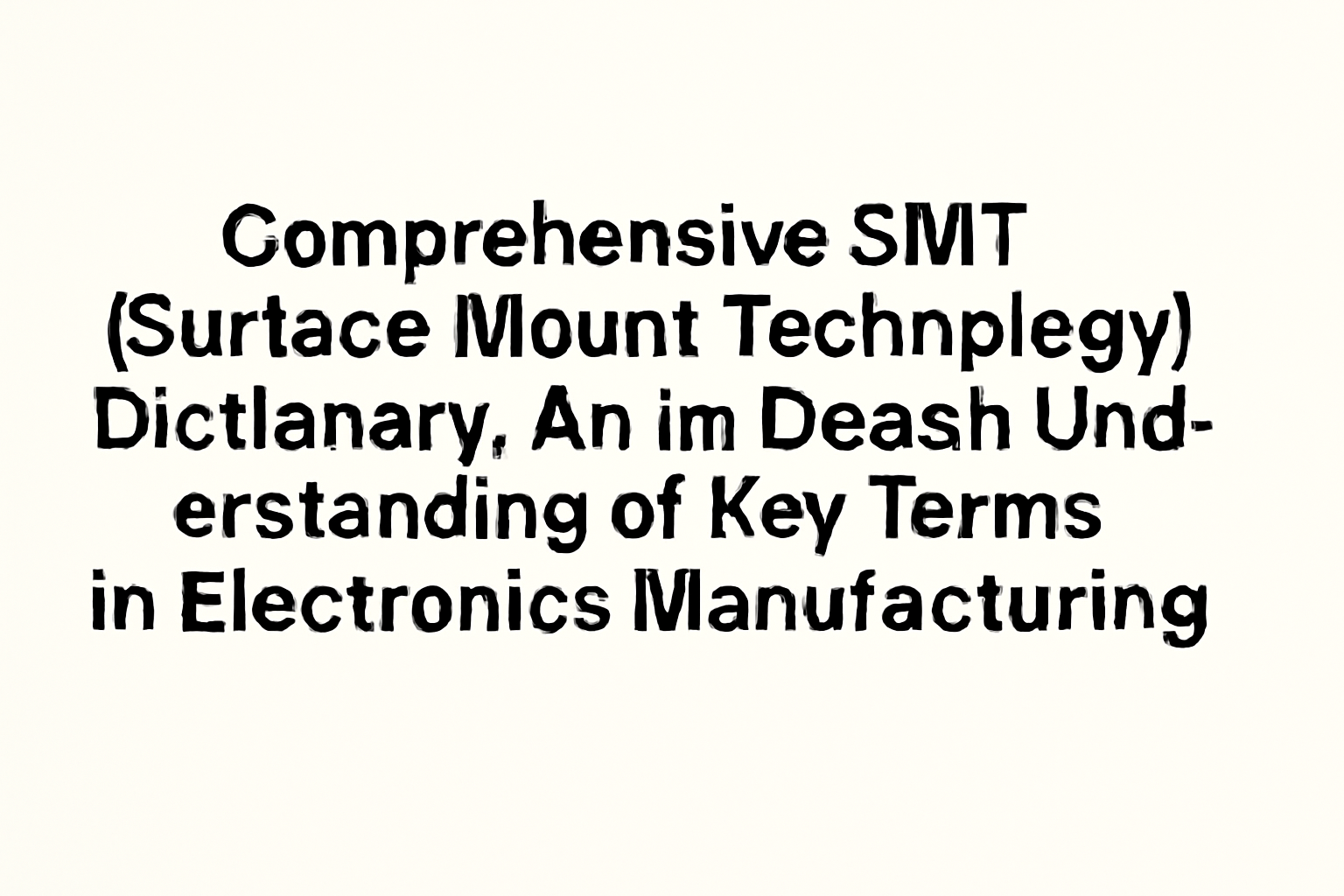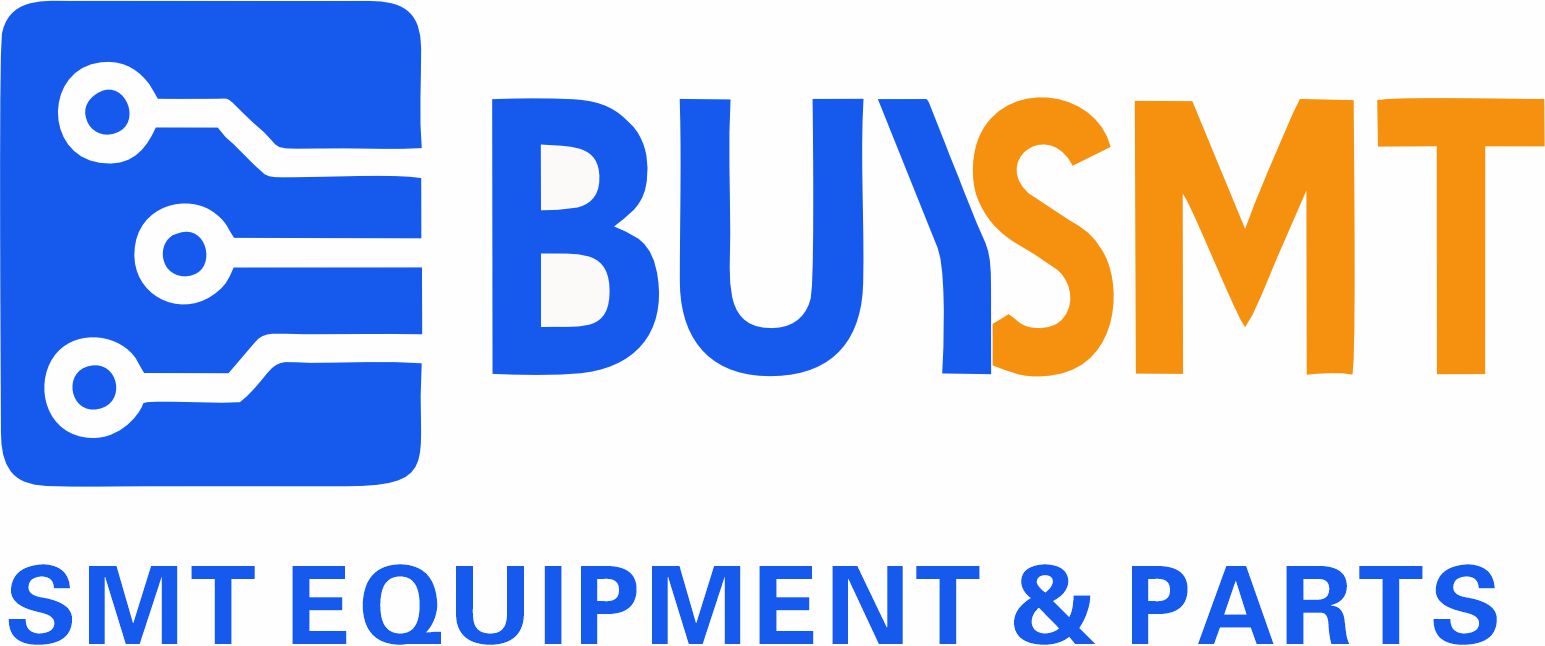
Die Oberflächenmontagetechnik (SMT) ist eine wesentliche Technologie in der modernen Elektronikfertigung, die bei der Herstellung von elektronischen Produkten wie Smartphones, Computern, Automobilelektronik und Haushaltsgeräten weit verbreitet ist. Dieser Artikel bietet ein detailliertes SMT-Terminologiewörterbuch, das eine Reihe von Schlüsselbegriffen von grundlegend bis fortgeschritten abdeckt und Fachleuten in der Elektronikfertigungsindustrie hilft, ein tieferes Verständnis dieses komplexen Prozesses zu erlangen.
1. SMT (Oberflächenmontagetechnik)
- Definition: Die Oberflächenmontagetechnik (SMT) ist ein Verfahren zur Montage von elektronischen Bauteilen, bei dem die Bauteile direkt auf die Oberfläche einer Leiterplatte (PCB) montiert werden, anstatt sie durch Bohrungen zu befestigen.
- Anwendungen: SMT wird bei der Herstellung verschiedener elektronischer Produkte eingesetzt, da es kostengünstig ist, eine hohe Fertigungseffizienz aufweist und den Anforderungen moderner Miniaturisierung und Leichtbauweise gerecht wird.
2. PCB (Printed Circuit Board)
- Definition: Eine gedruckte Schaltung (Printed Circuit Board, PCB) dient als Grundlage für elektronische Bauteile, auf denen oberflächenmontierte Bauteile (Surface Mount Devices, SMD) im SMT-Verfahren platziert werden.
- Typen: Einseitig, doppelseitig, mehrlagig.
3. Bestückungsautomat
- Definition: A Bestückungsautomat is an automated device used to accurately place Surface Mount Devices (SMDs) onto a PCB.
- Wichtige Parameter:
- Genauigkeit bei der Platzierung: Die Präzision der Bauteilplatzierung.
- Durchsatzrate: Die Geschwindigkeit, mit der die Maschine Bauteile platzieren kann.
- Bauteilgrößenbereich: Der Bereich der von der Maschine unterstützten Komponentengrößen.
4. SMD (Surface-Mount Device)
- Definition: Ein oberflächenmontiertes Bauelement (SMD) ist ein Bauteil, das speziell für SMT-Prozesse entwickelt wurde und in der Regel ein bleifreies Design aufweist, das direkt auf die Leiterplattenoberfläche gelötet werden kann.
- Gängige Typen:
- Widerstände, Kondensatoren, Dioden, integrierte Schaltungen usw.
5. Lötpaste
- Definition: Lötpaste ist ein halbfestes Lötmaterial, das aus Lötpulver, Flussmittel und Lösungsmitteln besteht und zum Anbringen von Bauteilen auf einer Leiterplatte während des SMT-Prozesses verwendet wird.
- Merkmale: Die Viskosität, die Löttemperatur und die Fließeigenschaften der Lötpaste sind entscheidende Faktoren, die die Qualität der Lötstellen beeinflussen.
6. Reflow-Löten
- Definition: Beim Reflow-Löten wird die Lötpaste in einem Reflow-Ofen bis zu ihrem Schmelzpunkt erhitzt, wodurch dauerhafte Verbindungen zwischen den Bauteilen und der Leiterplatte entstehen.
- Prozess: Die Leiterplatte wird durch einen Reflow-Ofen geführt, wo sie auf eine bestimmte Temperatur erhitzt wird, um die Lötpaste zu schmelzen und den Lötprozess abzuschließen.
7. AOI (Automatisierte optische Inspektion)
- Definition: Die automatisierte optische Inspektion (AOI) ist eine Technik, bei der hochauflösende Kameras und optische Technologien eingesetzt werden, um die Qualität der SMT-Bestückung von Leiterplatten zu prüfen.
- Funktionen: Wird in erster Linie zur Erkennung von falsch ausgerichteten SMD-Bauteilen, fehlenden Bauteilen und Lötfehlern verwendet.
8. SPI (Lötpasteninspektion)
- Definition: Die Lötpasteninspektion (SPI) ist ein automatisiertes Verfahren, das die Konsistenz und die Platzierung der Lötpaste auf der Leiterplatte vor dem Reflow-Löten überprüft.
- Anwendung: Gewährleistet die Qualität der Lotpastenverteilung und verhindert Fehler im Reflow-Lötprozess.
9. Futtermittel
- Definition: Ein Feeder ist eine Vorrichtung zur Zuführung von Bauteilen zu einem Bestückungsautomaten, wobei es verschiedene Typen wie Bandfeeder und Scheibenfeeder gibt.
- Kategorien: Basierend auf Größe, Form und Verpackungsart der Komponenten.
10. Abholpreis
- Definition: Die Aufnahmerate bezieht sich auf die Geschwindigkeit, mit der ein Bestückungsautomat die Bauteile aus der Zuführung entnehmen und auf der Leiterplatte platzieren kann.
- Beeinflussende Faktoren: Maschinenleistung, Zuführungsart und Komponentenspezifikationen.
11. Schablonendruck
- Definition: Der Schablonendruck ist ein Verfahren in der SMT-Technik, bei dem Lotpaste mit Hilfe einer Schablone auf die Leiterplatte aufgetragen wird, um eine gleichmäßige Ablagerung auf den Pads zu gewährleisten.
- Zweck: Er wird verwendet, um vor der Bestückung der Leiterplatte Lötpaste aufzutragen.
12. BGA (Ball Grid Array)
- Definition: Ein Ball Grid Array (BGA) ist eine Art von oberflächenmontiertem Gehäuse, bei dem das Bauteil mit Hilfe von Lötkugeln, die in einem Gittermuster angeordnet sind, mit der Leiterplatte verbunden wird.
- Herausforderungen: Da sich die Lötkugeln auf der Unterseite des Bauteils befinden, können herkömmliche optische Prüfverfahren nicht eingesetzt werden; in der Regel ist eine Röntgenprüfung erforderlich.
13. Röntgeninspektion
- Definition: Die Röntgeninspektion ist eine zerstörungsfreie Prüftechnik zur Untersuchung der Lötstellen von Bauteilen wie BGAs und CSPs, bei denen die Lötstellen nicht sichtbar sind.
- Anwendung: Wird in erster Linie zur Erkennung von Lötfehlern, Lunkern und Überbrückungsproblemen verwendet.
14. Prüf- und Messgeräte
- Definition: Prüf- und Messgeräte beziehen sich auf Werkzeuge, die zur Überprüfung der Qualität der SMT-Bestückung verwendet werden, einschließlich elektrischer Prüfungen, Funktionsprüfungen und Druckprüfungen.
- Werkzeuge: Oszilloskope, Multimeter, In-Circuit-Tester, usw.
Schlussfolgerung:
Die Oberflächenmontagetechnik (SMT) ist ein Eckpfeiler der modernen Elektronikfertigung. Ihre Präzision, Effizienz und Kompatibilität mit den Miniaturisierungstrends in der Industrie machen sie zu einer weit verbreiteten Technologie. Ein tiefes Verständnis der SMT-Terminologie ist für Ingenieure und Techniker von entscheidender Bedeutung, um die Qualitätskontrolle und optimale Leistung im Produktionsprozess zu gewährleisten. Durch die Beherrschung dieser Schlüsselbegriffe können Fachleute in der sich schnell entwickelnden Landschaft der Elektronikfertigung ganz vorne mitspielen.

